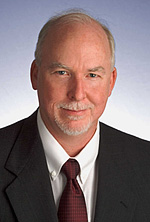PBS Doing More With Even Less

John McCoskeyLAS VEGAS
When times are tough in the commercial broadcast business, they must really be rocky in public broadcasting. PBS, with more than 350 member stations, is certainly vulnerable to government belt-tightening, as well as cutbacks among their corporate, foundation and pledge-drive tolerant supporters. Nevertheless, while hardly unscathed by the economic downturn, the network is moving ahead with advanced technology initiatives to streamline operations and do more with even less for its member stations and viewing audience.
One of PBS' primary goals is to offer technical support to its constituent stations and be a conduit for best practices. CTO John McCoskey acknowledges the network's focus on "increasing automation and refining content workflows... the traditional approach to multiplatform services has been separate vertical infrastructures for each distribution type; we've focused [instead] on building a common backend that supports broadcast, online, education, retail and syndication delivery... [allowing us to] limit the new infrastructure and operational load of adding new outlets."
PBS's goal, McCoskey continued, "is to have normal workflows [that] require little human interaction, freeing-up staff to focus on things that need expertise and decision-making." In fact, the 24/7 NOC staff in Springfield, Va. is already remotely managing station operations for some members, "so they can run unattended for several hours a day to reduce operational costs," he said.
NEXT GENERATION TECH
The costs of delaying the DTV transition by four months are a fiscal speed bump for member stations, initially estimated at some $22 million to cover another four months' utilities, tower leases and aging equipment upkeep. However, "about a third shut off their analog services on February 17 and more will transition before the June 12 deadline," McCoskey said, thus reducing its impact.
PBS is also working with "our key producing partners on digital delivery of content... most content still arrives on videotape, which requires us to ingest at real-time speeds... file-based delivery would increase efficiency and flexibility for both PBS and producers," McCoskey said. "Early tests of this workflow are encouraging." NGIS—an oft heard acronym within the PBS community—is essential to achieving that goal. The "Next Generation Interconnection System" is a phased 10- year project which began in 2005.
NGIS was funded a few years back by a special congressional appropriation so the recent economic downturn has had no material impact on progress, according to McCoskey.
"In fact, our purchasing power is stronger due to aggressive pricing by our vendors and continuing advances in server and storage technologies," he said. The first goal, to replace an expiring and expensive satellite contract, was recently reached with the move to a new satellite, and transition from standard to high definition on the network's primary services. "The next major phase is the change from traditional linear satellite feeds to file-based delivery to member stations."
Following a very strict and formal RFP, evaluation and testing process, PBS announced in February that it had tapped International Datacasting Corp. to provide key parts of that infrastructure. File-based HDTV content will be distributed via the company's SuperFlex broadband DVB/S2-IP satellite system and Datacast XD file management and distribution software.
"We are testing with a small group of stations that are representative of the diverse universe of configurations and workflows," McCoskey said, "with the intention to roll it out to all stations in 2010."
TECHCON TUTORIALS
As the broadcast industry's annual Las Vegas trek looms, many in the PBS world plan to arrive early and stay late. NAB is just the bonus event that happens right after TechCon, public television's annual conference held the week prior. NGIS and new technology workflows will be the focus of attention, and while the economy will most certainly cut into attendance, TechCon remains the one event that station staff count on to keep up-to-date and connected with their colleagues.
"One of our goals [this year] is to increase the value of the conference by bringing more tutorials, which offer practical experience that attendees can bring back to their stations," said McCoskey. A sure-fire highlight will be the NGIS demonstrations running throughout the conference, "offering attendees a chance to see the equipment and speak to the 'alpha stations' who have been involved in the new system's development."
Other valuable session topics range from how to write a winning grant application to implementing BXF and file-based workflows, and from multi-platform content delivery to making the "un- or lightly attended" master control room succeed. User groups for traffic managers and practical solutions for FCC Compliance and Public File requirements are also expected to be popular.
TechCon "is a chance for stations to talk to others who have already made the digital conversion and get advice on how to handle the switch, what worked and what didn't... we will wrap-up, as always, with a PBS Staff Q&A which has always proved to be valuable," McCoskey said.
Get the TV Tech Newsletter
The professional video industry's #1 source for news, trends and product and tech information. Sign up below.
